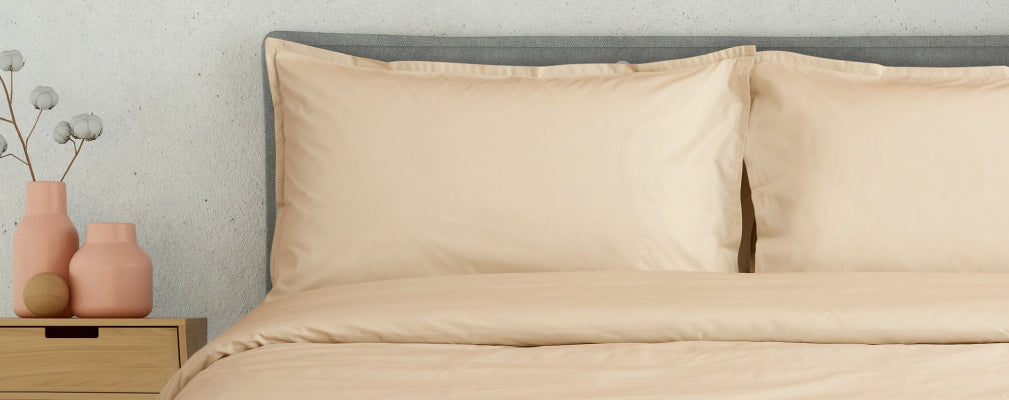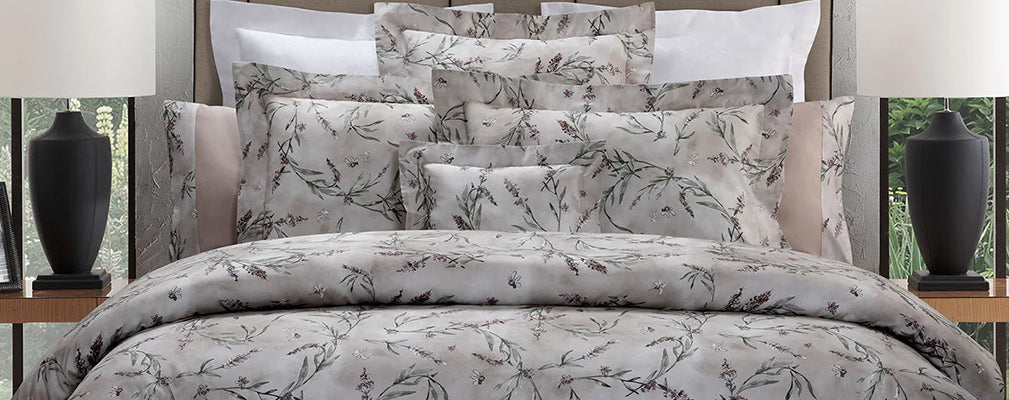What are the most commonly used types of cotton and how are they used?
Cotton fabrics are among the most widely used fabrics in the world because of their softness and breathability. In this article we will explore the most common types of cotton, their characteristics and the most suitable applications.
Before analyzing the various types of cotton, let's see what this material is: it is one of the most beloved fabrics, as it is natural, versatile and easy to clean, perfect for both clothing and home upholstery.
It is the best type of fabric for household linens-from sheets for freshness and breathability to table linens because of its versatility and ease of washing.
What is cotton and how it is processed
It is the most widely used textile and plant fiber in the world. It is made from plants in the genus Gossypium.
These, in fact, are capable of producing a number of light yellow flowers from which fruits are born, which, in turn, contain seeds covered by cotton lint.
The latter, once harvested and processed, will give rise to the famous yarn: the cotton hairs are thin and shiny, and the longer they are, the greater their commercial value (in any case, we are talking about sizes of a few centimeters).
The bale-which is released independently from the ripe fruit-must be sucked through some machinery and then "ginned" to clean it of all seeds before the carding stage.
The last two processing steps involve, precisely, "carding" (useful for cleaning and untangling the filaments with the aim of making them parallel) and "combing" (to remove any impurities along with the shorter fibers).
What are the types of cotton on the market?
Before reviewing the different types of cotton, it is good to make a clarification: cotton is different from polycotton (a synthetic material formed by the union of polyester and cotton, although the presence of the latter is reduced to a percentage of only 5%); consequently, great care must be taken when reading fabric labels, taking care to choose the material you want and not a substitute for it.
Another difference when it comes to cotton is its processing: depending on how they are processed, in fact, one distinguishes between plain cotton, percale cottonand satin.
Different types of cotton also differ in strength, given by the number of threads in warp and weft per centimeter, which can be in the ratios 27/27, 27/30 and 30/30.
In general, the more threads there are, the stronger the material and the less it shrinks during washing, thus ensuring higher fabric quality.
Cotton types and characteristics
As we have mentioned, there are three main types of cotton on the market, understood as processing and weaves:
Plain cotton: also available on the market in the organic version (that is, without the use of pesticides on cotton plants) is a durable and pliable plant fiber. However, pay attention to washing: in order not to ruin it, in fact, the temperature of the water in the washing machine should not exceed 30-40°C.
Percale cotton, or cotton percale: particularly valuable, is composed of fine yarns with a tightly woven, that is, "dense," structure. It is obtained by working the cotton in a loomed weave, a technique that involves perfect perpendicularity between warp and weft. The finer the yarn used for weaving, the higher the quality and lightness of the fabric. Soft and velvety, it is widely used particularly for the production of trousseau linens. For percale cotton products many times the amount of threads per cm2 is stated on the packages. The thinner these are, the greater the quantity of threads and thus the quality.
Cotton Satin: the finest (and most expensive) cotton. Made with a satin weave, which involves a prevalence of warp in the weave, it is used for the making of the finest lingerie items-thanks to its peculiarity of adhering to the body without compressing-for the lapels of men's tuxedos or for other products such as, for example, comforter covers. In this case, it can be machine-washed, although often, depending on the type of fiber blend, it is preferable to wash it by hand.

















